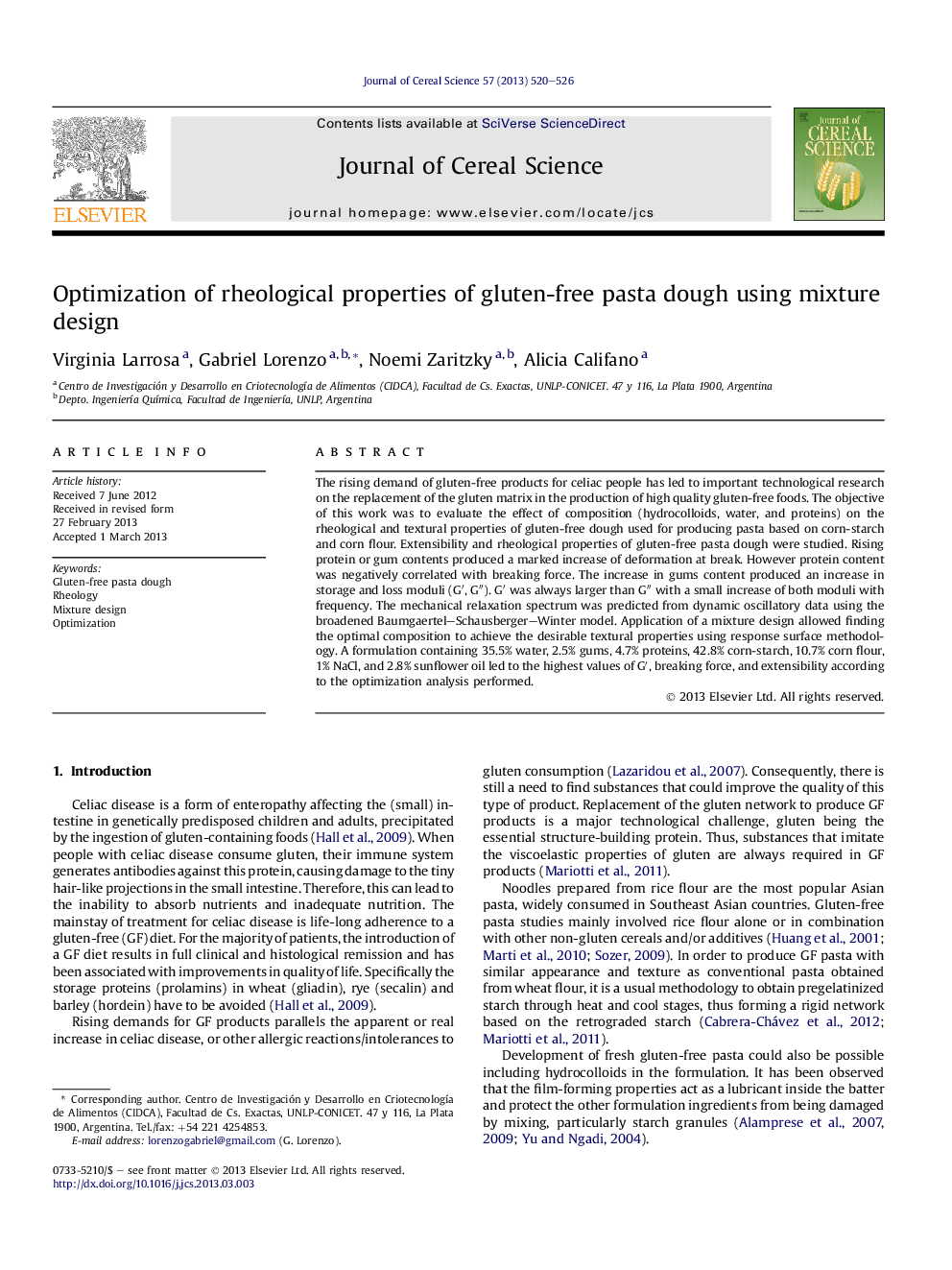| Article ID | Journal | Published Year | Pages | File Type |
|---|---|---|---|---|
| 6377954 | Journal of Cereal Science | 2013 | 7 Pages |
Abstract
The rising demand of gluten-free products for celiac people has led to important technological research on the replacement of the gluten matrix in the production of high quality gluten-free foods. The objective of this work was to evaluate the effect of composition (hydrocolloids, water, and proteins) on the rheological and textural properties of gluten-free dough used for producing pasta based on corn-starch and corn flour. Extensibility and rheological properties of gluten-free pasta dough were studied. Rising protein or gum contents produced a marked increase of deformation at break. However protein content was negatively correlated with breaking force. The increase in gums content produced an increase in storage and loss moduli (Gâ², Gâ³). Gâ² was always larger than Gâ³ with a small increase of both moduli with frequency. The mechanical relaxation spectrum was predicted from dynamic oscillatory data using the broadened Baumgaertel-Schausberger-Winter model. Application of a mixture design allowed finding the optimal composition to achieve the desirable textural properties using response surface methodology. A formulation containing 35.5% water, 2.5% gums, 4.7% proteins, 42.8% corn-starch, 10.7% corn flour, 1% NaCl, and 2.8% sunflower oil led to the highest values of Gâ², breaking force, and extensibility according to the optimization analysis performed.
Keywords
Related Topics
Life Sciences
Agricultural and Biological Sciences
Agronomy and Crop Science
Authors
Virginia Larrosa, Gabriel Lorenzo, Noemi Zaritzky, Alicia Califano,
